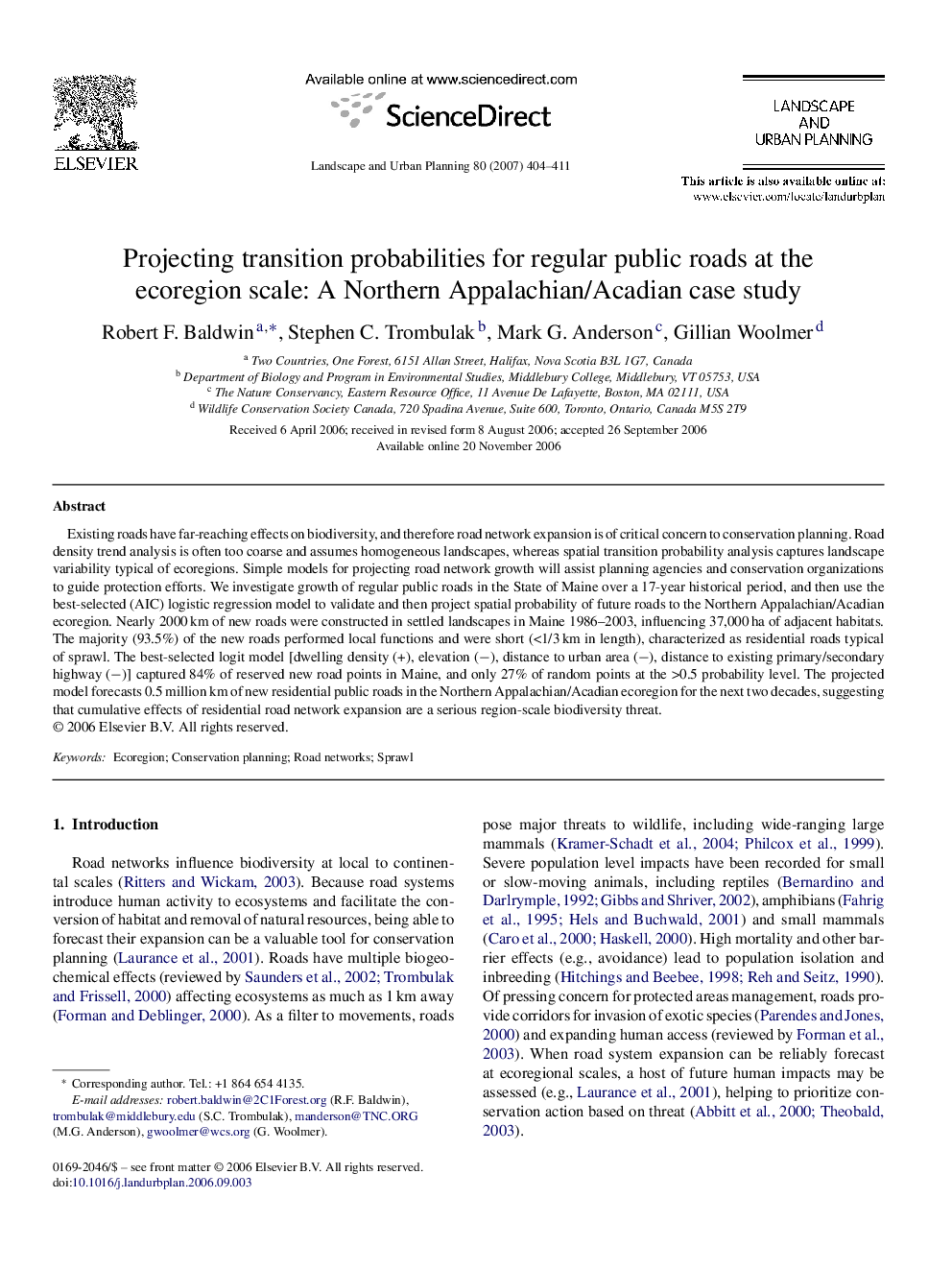| Article ID | Journal | Published Year | Pages | File Type |
|---|---|---|---|---|
| 1050624 | Landscape and Urban Planning | 2007 | 8 Pages |
Abstract
Existing roads have far-reaching effects on biodiversity, and therefore road network expansion is of critical concern to conservation planning. Road density trend analysis is often too coarse and assumes homogeneous landscapes, whereas spatial transition probability analysis captures landscape variability typical of ecoregions. Simple models for projecting road network growth will assist planning agencies and conservation organizations to guide protection efforts. We investigate growth of regular public roads in the State of Maine over a 17-year historical period, and then use the best-selected (AIC) logistic regression model to validate and then project spatial probability of future roads to the Northern Appalachian/Acadian ecoregion. Nearly 2000Â km of new roads were constructed in settled landscapes in Maine 1986-2003, influencing 37,000Â ha of adjacent habitats. The majority (93.5%) of the new roads performed local functions and were short (<1/3Â km in length), characterized as residential roads typical of sprawl. The best-selected logit model [dwelling density (+), elevation (â), distance to urban area (â), distance to existing primary/secondary highway (â)] captured 84% of reserved new road points in Maine, and only 27% of random points at the >0.5 probability level. The projected model forecasts 0.5 million km of new residential public roads in the Northern Appalachian/Acadian ecoregion for the next two decades, suggesting that cumulative effects of residential road network expansion are a serious region-scale biodiversity threat.
Related Topics
Life Sciences
Agricultural and Biological Sciences
Ecology, Evolution, Behavior and Systematics
Authors
Robert F. Baldwin, Stephen C. Trombulak, Mark G. Anderson, Gillian Woolmer,
